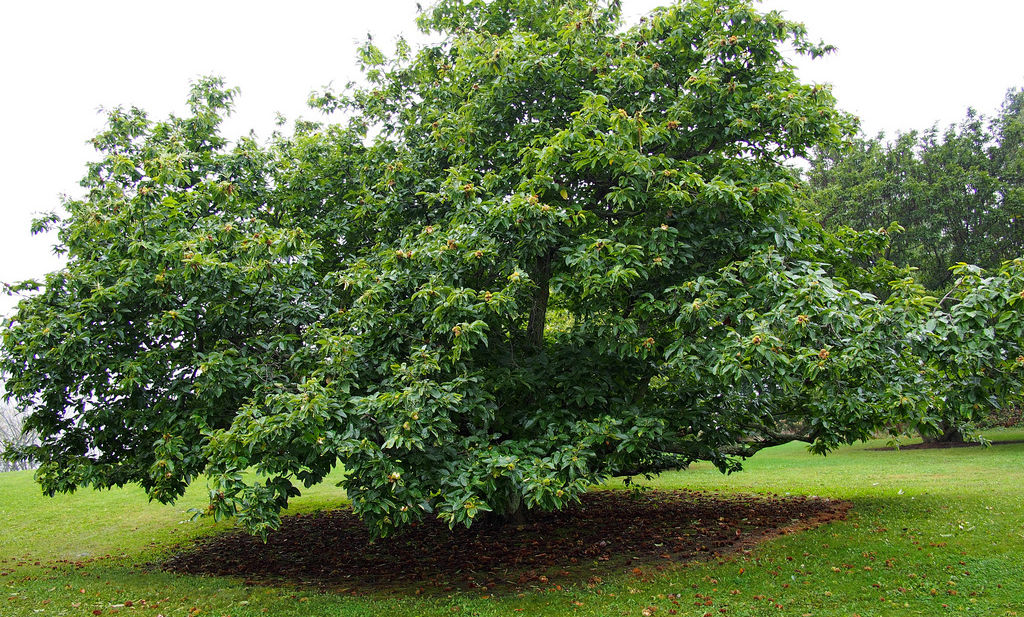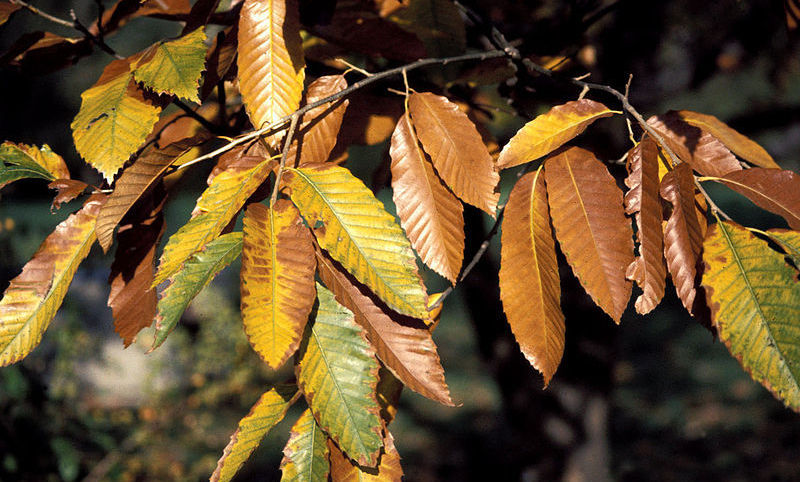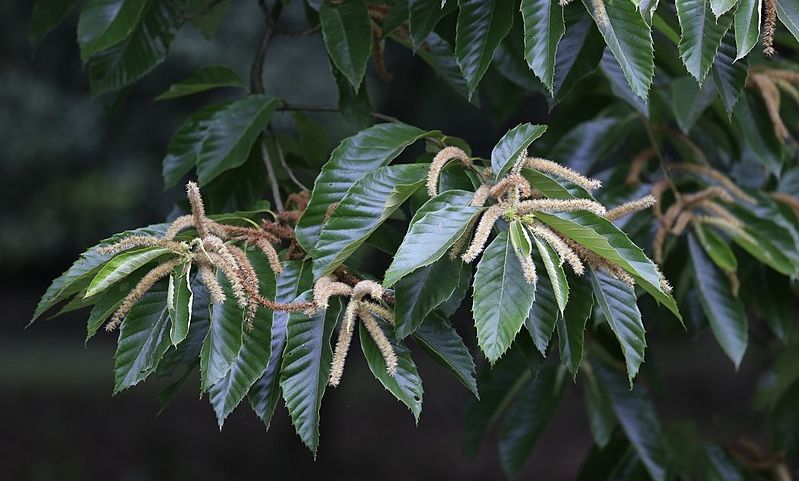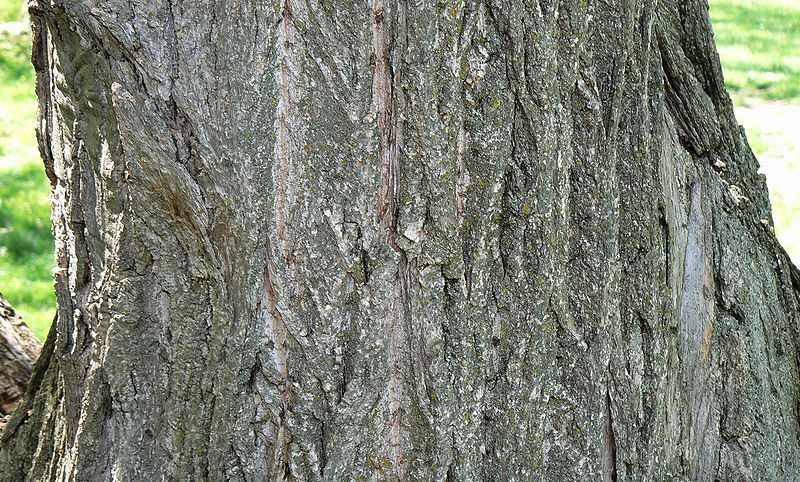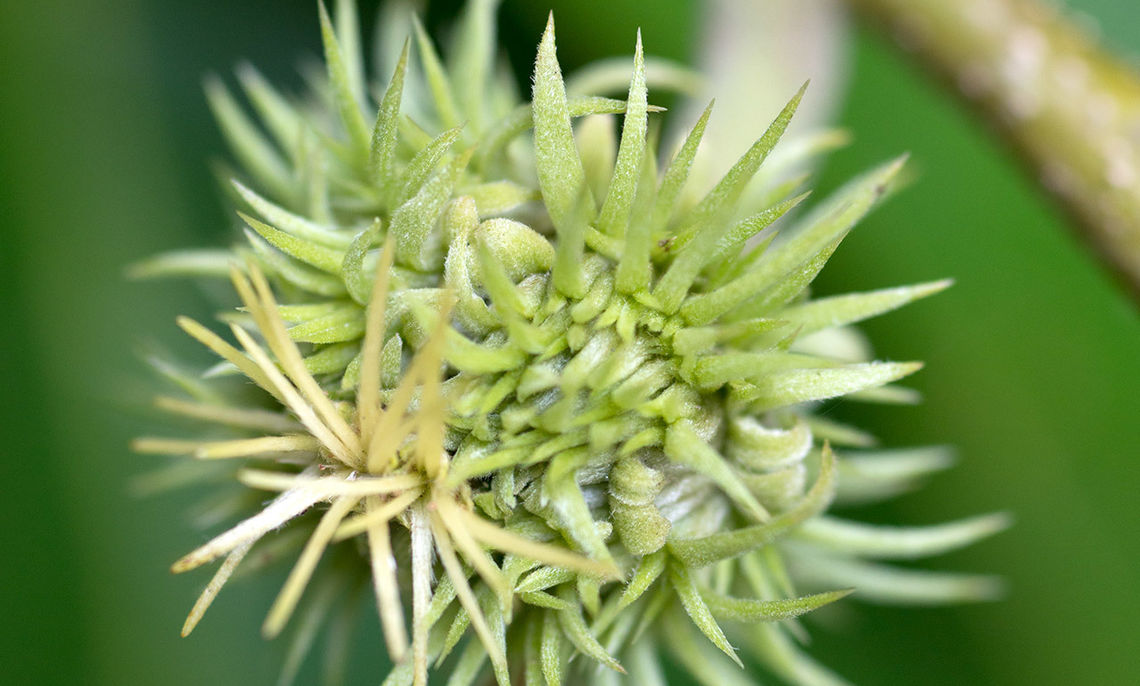Chinese Chestnut (Castanea mollissima)
One of the most noticed attributes of the chinese chestnut is its spiky, porcupine-like nut encasings, that usually litter the area surrounding the tree. These shells hold 2-3 edible chestnuts within. This tree also produces unpleasant smelling, light green or creamy yellow flowers. Its leaves are dark green, long, toothed, and have a pointed oval shape. This tree attracts small mammals.
Family: Fagaceae (Beech)
Characteristics: The 3-inch to 6-inch-long leaves are dark green and coarsely serrated. In the fall, leaves turn yellow or golden-brown. In May-June, unpleasant smelling, light green or creamy yellow flowers begin to bloom. These flowers are followed by the tree's edible nuts, which are encased in a prickly porcupine-like outer shell. Bark is dark gray, ridged, and furrowed. This tree has a rounded shape with a short trunk and wide-spreading branches. It grows 40-60 feet high and wide.
Foliage: Deciduous (leaves lost seasonally)
Geographic Origin: Korea, China (non-native)
Cultivation Notes: Requires medium maintenance. Does best in full sun. Prefers acidic, moist, and well-drained soils. Established trees can do well in dry conditions.
Number on Campus: 1
Sources: Dirr, Morton Arboretum, Missouri Botanical Garden

